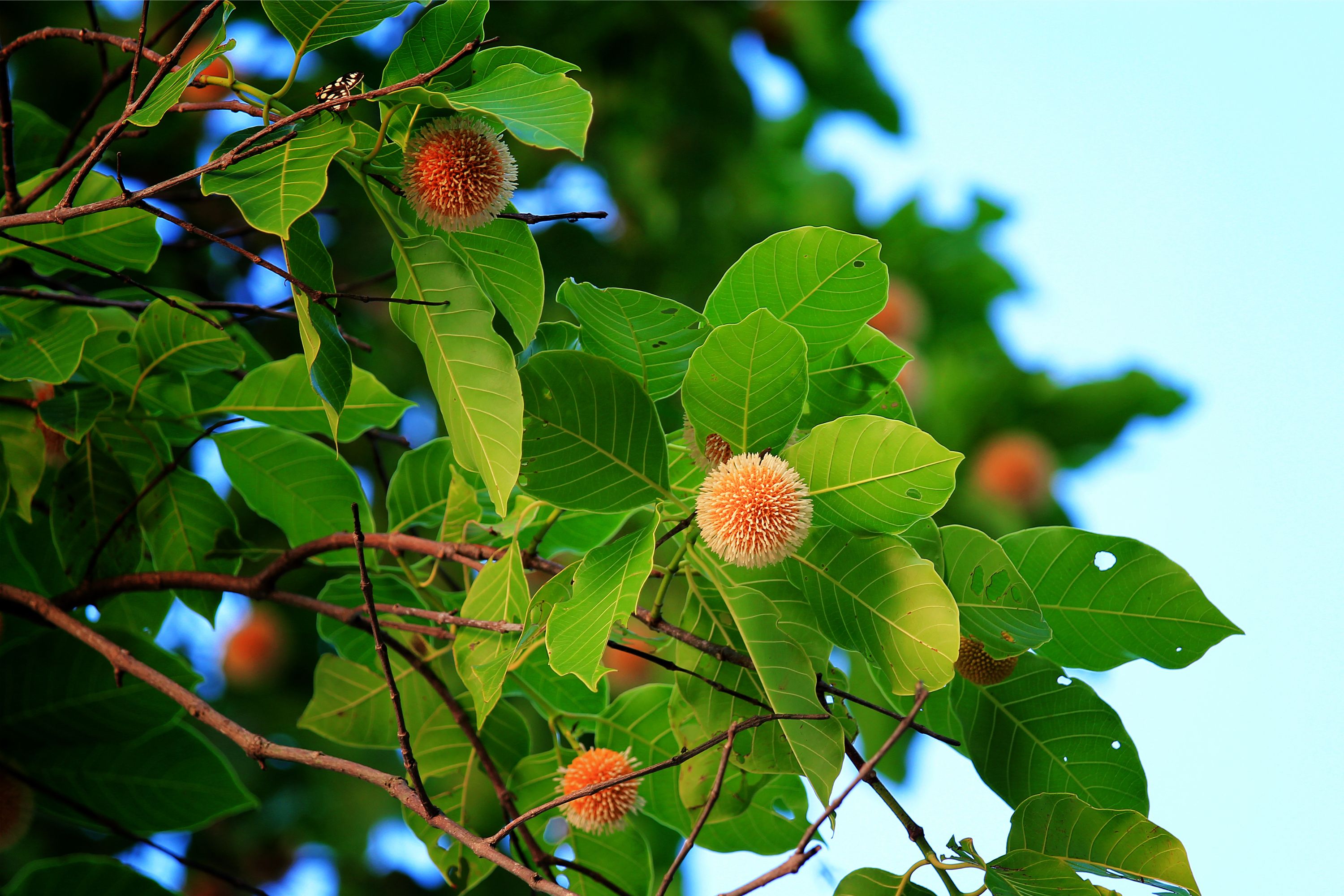Bur tree
(Nauclea orientalis)

Description
Nauclea orientalis is a species of tree in the family Rubiaceae, native to Southeast Asia, New Guinea, and Australia. It has many common names, including bur tree, canary wood, Leichhardt pine and yellow cheesewood. It grows to a maximum of around 30 m (98 ft) in height and has large glossy leaves. It bears spherical clusters of fragrant flowers that develop into golf ball-sized edible but bitter fruits. The yellowish to orange soft wood is also used for timber and in woodcarving and folk medicine. Much recently in Australia, it has been called the coronavirus tree because its flowerhead resembles the virus. The broadly ovate smooth (glabrous) leaves are opposite and around 7 to 30 cm (2.8 to 11.8 in) by 4 to 18 cm (1.6 to 7.1 in) in size. The upper surface is glossy green. The bottom side has raised prominent yellow venation. Like most members of the family Rubiaceae, the stipules of Leichhardt trees are interpetiolar. In Nauclea, these interpetiolar stipules are held erect and pressed together, resulting in strongly flattened vegetative buds. They are large, around 1 to 3.5 cm (0.39 to 1.38 in) long. On their inside surfaces are a number of small red glands that can resemble insect eggs. The small fragrant flowers are tubular and are yellowish to orange with white stamens. They are grouped into a spherical cluster originating from a central point about 3 cm (1.2 in) in diameter. They bloom from September to January in Australia, and August to October in the Philippines. The individual flowers are small, about 8 to 10 mm (0.31 to 0.39 in) long and 3 to 5 mm (0.12 to 0.20 in) in diameter. They possess a perianth (each composed of five petals and sepals in separate whorls), The internal surface of the corolla are yellow to orange and sweet-smelling. They are frequently partly fused together, forming a long corolla tube tipped with the individual lobes of the petals. The flowers are bisexual, with 5 short and separate stamens attached to the perianth. The calyces are also fused together, resulting in the spherical shape of the flower head. They are epigynous, with the ovary inferior (lying below the attachment of the other flower parts).
Taxonomic tree:







